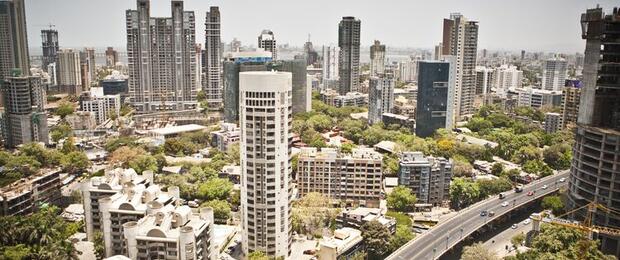Sandeepa manages production and delivery of country insight and market intelligence from South Asia including India, Pakistan and Bangladesh for the UK education institutions to access opportunities for partnership and mobility.
You are here
Home ›What are India’s key economic priorities and growth sectors?
by Sandeepa Sahay
11/04/2023
Higher Education Institutions

India’s economy has seen relatively strong growth since the pandemic, with the World Bank estimating a 6.9 per cent increase in GDP in 2022 – a much stronger performance than most developed economies even though the growth rate was lower than the year before. But beneath India’s economic growth and its goal to become a five trillion-dollar economy by 2025, the specific sectors targeted for growth by the Indian government can influence the country’s higher education system and the funding priorities for research and development.
National economic priorities and growth sectors
Looking at India’s economic priorities, the 2023-24 national budget places focus on creating both physical and digital infrastructure, as well as the areas of manufacturing, fintech, green growth and new technologies. These priority sectors will be supported with government investment.
From the broader angle of economic growth sectors, several areas stand out:
- India’s automobile industry contributes nearly 6.4 per cent of India’s gross domestic product (GDP) and 35 per cent of manufacturing GDP. In line with its target for net-zero carbon emission, India is transitioning to clean mobility by using alternatives such as electrification or use of green hydrogen. There is strong backing from all levels of government for developing India’s electric vehicle industry such as 100 percent FDI is allowed, introduction of incentive schemes to encourage technology innovation and supply chain capacity building in the automobile manufacturing sector, and rapid expansion of public charging infrastructure.
- India’s pharmaceutical industry ranks third in the world for production by volume and 14th by value. India supplies 60 per cent of world vaccines and 20 per cent of generic medicines. The market size is forecast to grow at the rate of 11-12 per cent between 2020-2030 reaching $65 billion USD by 2024 and around $130 billion USD by 2030.
- Renewable energy is projected to see strong growth, with India declaring its intention to increase its non-fossil capacity to 500 gigawatts by 2030 at the Glasgow Climate Change Conference 2021 as well as committing to net-zero carbon emissions by 2070. This growth will be driven by a combination of urbanisation boosting the demand for energy and an increase in the proportion of power generated from non-fossil sources, which it is estimated will reach 66 per cent by 2030. Around $200 billion USD is expected to be invested by the private sector and state-owned enterprises to meet India’s new energy roadmap by 2030, which also includes a green hydrogen policy which aims to meet 10 per cent of global hydrogen demand.
- The financial technology (fintech) sector is growing fast in India with a market size of $50 billion USD in 2021 which is estimated to grow three times by 2025. There are more than 2,000 recognised FinTech start-ups in India, including 23 with valuations over $1 billion USD. The recently-established Gujarat International Fin-tech City GIFT City , which is supported by both state and national governments, aims to provide an innovative financial ecosystem for economic activities for domestic and internal businesses with globally benchmarked regulations, taxation and policies.
- Other key emerging sectors include artificial intelligence, which is expected to reach $7.8 billion USD in India by 2025; geospatial systems, which are forecast to become a $2.8 billion USD market by 2025; drones, which are supported by India’s Drone Shakti mission which aims to make the country the world leader in drones by 2030 by providing funding to startup businesses in the field; the space sector, where the government intends to increase India’s share of the global market from its current 2.1 per cent to around 10 per cent by 2030; and semiconductors, which are projected to become a $55 billion USD market in India by 2026.
Research and development funding
One important way in which these priority sectors can affect UK education institutions is through spending on research and development. While India’s R&D spending makes up a lower percentage of GDP compared to developed countries (as shown in the infographic below), around 60 to 65 per cent of this spending comes from the government with the private sector (including foreign direct investment) making up the rest.
According to the latest official data available in the Research and Development Statistics 2019-20, the percentage share of central government expenditure by the key scientific ministries provides further understanding of the priorities that drive research and development funding.
Highlights from India’s budget 2023 for spending on research and development include:
- Facilities in select Indian Council for Medical Research labs will be made available for research by public and private medical college faculty and private sector R&D teams for encouraging collaborative research and innovation.
- A new programme in pharmaceuticals will be undertaken through Centres of Excellence to promote research and innovation. Industry will be engaged to invest in research and development in specific priority areas.
- Dedicated multidisciplinary courses for medical devices will be supported in existing institutions to build skilled manpower for futuristic medical technologies, high-end manufacturing and research.
- To set up an effective AI ecosystem, three Centres of Excellence for Artificial Intelligence will be established in top educational institutions in partnership with industry. This will include interdisciplinary research, cutting-edge applications and scalable problem solutions in the areas of agriculture, health, and sustainable cities.
- 100 labs for developing applications using 5G services will be set up in engineering institutions to explore a new range of opportunities, business models and employment potential. The labs will cover applications like smart classrooms, precision farming, intelligent transport systems, health care applications etc.
- A National Data Governance policy will be developed to promote innovation and research by start-ups and academia. For HEIs, it would help in their research with access to anonymised data.
- A research and development grant for indigenous production of Lab Grown Diamond seeds and machines will be given to one of the Indian Institute of Technology (IIT) for 5 years. This will involve an industry led research and innovation effort, with the purpose to expanding India’s export in this sector and generate employment.
- For facilitating ease of business, targeted measures will be undertaken in the GIFT City, a new business district offering financial services and technology related activities. It includes setting up a single window IT system for registration and approval from the key banking and tax regulators, recognising offshore derivative instruments as valid contracts etc. GIFT City recently announced policies allowing overseas HEIs to set up branch campuses and offshore education centres in the city.
It can be seen that most of these funding schemes focus on areas that are also economic priorities, showing the connection between these fields.
Most government R&D funding comes from the national government. However there is also a big push from the new Science, Technology and Innovation policy and National Education Policy 2020 to establish state funded and managed science, technology and innovation infrastructure. According to an innovation index published by the National Institute for Transforming India, a top government think-tank, the top-ranked state for the last three years has been Karnataka, which benefits from a large FDI inflow due to large corporate and angel investors. Other states identified as having potential to grow include Telangana, Haryana, Chandigarh, Manipur and Uttar Pradesh, which are setting up infrastructure to attract large scale corporate and FDI investment in the next decade.
Theme:
About the Author
Latest Blog Posts
04/03/2024





Add new comment
Please note that comments by non-members are moderated. They do not appear on the site until they have been approved. Comments by registered members appear here immediately. Your email address will not be published. All fields are required.